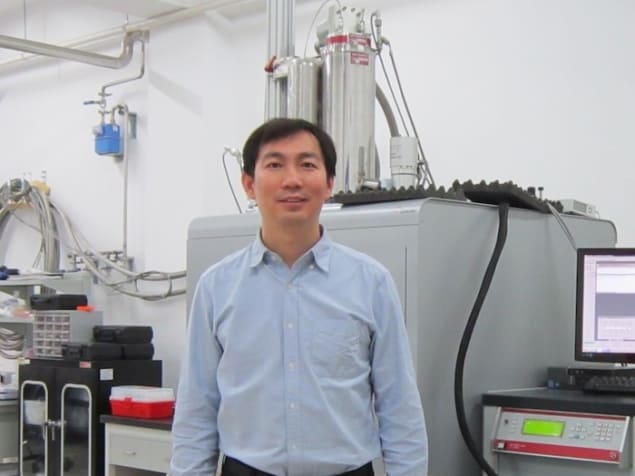
Researchers have seen intrinsic superconductivity up to a temperature of 0.72 K in the transition metal dichalcogenide niobium telluride (NbTe2). The superconductivity comes from spin-orbit coupling induced p-wave pairing, which suggests that the material might be a topological superconductor. They have also observed anisotropic magnetoresistance in the material and devised a model (which could be applicable to a variety of layered 2D compounds) to fit their observations. The findings could help advance future studies on topological superconductors for applications in quantum computation.
Transition metal dichalcogenides (TMDs) have the chemical formula MX2, where M is a transition metal (such as Mo or W) and X is a chalcogen (such as S, Se or Te). Most TMDs are made up of layers stacked together by relatively weak van der Waals interaction and some of these materials go from being indirect band-gap semiconductors in the bulk to direct band-gap semiconductors when scaled down to monolayer thickness. These monolayers efficiently absorb and emit light, and so might find use in a variety of optoelectronics device applications such as light-emitting diodes, lasers, photodetectors and solar cells. They might also be used to make circuits for low-power electronics, low-cost or flexible displays, sensors and even flexible electronics that can be coated onto a variety of surfaces.
Distorted 1T type materials
Among layered TMDs, “distorted 1T” type materials are particularly interesting, says Jian Wang of Peking University, who led this research effort. In a single layer, the 1T structure is unstable, he explains, and spontaneously distorts so that the periodicity of the metal chains in the material doubles up. This behaviour has already been seen in the TMDs tungsten telluride (WTe2) and molybdenum telluride (MoTe2).
The resulting single-layer structure is said to be 1T’ or 1T’’. In the former, the period doubling lowers the metal d orbital so that its energy level lies below the chalcogenide p orbital. This leads to electronic band inversion and exotic behaviour, like the appearance of the quantum spin Hall insulator (QSHI) state.
NbTe2 is an example of 1T’’ structure, which is much less studied compared to 1T’, says Wang. Here, the distorted layers stack up in a monoclinic fashion and a quasi-1D triple metal chain forms that is different to the double chains in WTe2.
Inherent superconductivity
In previous experiments on the electronic structure of NbTe2, researchers found that the lattice distortion in the material comes from an effect called Fermi surface nesting, as well as electron-phonon coupling. Other studies showed that the material could be a semimetal with symmetry protected topological state. Indeed, magnetic susceptibility measurements have also pointed to the possibility of the material being superconducting.
Wang and colleagues have now measured the electron transport in high quality crystals of 1T’’ monoclinic NbTe2 prepared by a technique called chemical vapour transport and have clearly observed the onset of intrinsic superconductivity at a temperature of 0.72 K. “At this temperature, the resistivity of the material starts to drop sharply and reaches zero at around 0.64 K,” says Wang. “This resistivity drop can be suppressed by applying a perpendicular and parallel magnetic field, thus confirming that we have observed a superconducting state. It is intrinsic because our sample is neither doped or pressurized.”
The researchers say that the upper critical magnetic field Hc in the parallel direction plotted against temperature T shows unconventional quasi-linear behaviour. This indicates that spin-orbit coupling induced p-wave pairing contributes to the superconductivity in NbTe2.

Twistronics lights up with moiré exciton experiments
And that is not all: they also found that the magnetoresistance of the material increases almost linearly with applied magnetic field of up to 50 Tesla – a result that confirms previous observations and provides stronger evidence for the existence of quantum limit transport. The magnetoresistance is anisotropic, which means that it varies depending on the direction of magnetic field.
A better model
“We devised a model for this anisotropic magnetoresistance that better fits our experimental data,” explains Wang. “This model is expected to be applicable to a variety of layered materials.”
The researchers, reporting their work in Chinese Physics Letters, say they would now like to fabricate monolayer or few-layer devices from NbTe2. “We would like to measure the superconductivity, linear magnetoresistance and Fermi surface anisotropy of these samples and see how these properties change with sample dimensions,” says Wang. “2D NbTe2 is predicted to be a Dirac semimetal so it is very intriguing to see superconductivity in this material,” he tells Physics World.



